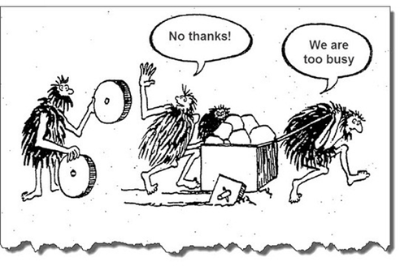 Growth brings complexity—and complexity is the No. 1 culprit in stagnation. But this doesn’t mean established companies have to lose the startup mindset and turn sluggish with time. Nor do startups necessarily have to lose their edge by bringing in systems and processes as they scale up.
Growth brings complexity—and complexity is the No. 1 culprit in stagnation. But this doesn’t mean established companies have to lose the startup mindset and turn sluggish with time. Nor do startups necessarily have to lose their edge by bringing in systems and processes as they scale up.
What we all love about startups is the founder’s mentality—empowered individuals taking action to get things done. But growth always goes hand-in-hand with some amount of organizational complexity. When you reach the 10- to 15-million-square-foot range, the CEO must delegate additional property-level decisions. At 20 to 50 million square feet, the company must tackle how it addresses true asset management. At 80 to 100 million feet, big-picture questions about the right operational structure for the existing and future portfolio become critical.
If you’re not careful, though, your employees will end up needing a dozen signatures for every $50,000 decision. At older companies, in particular, organizational bloat is often rationalized as the status quo. “This is the right way to do it, because it’s the way we’ve always done it.”
For established organizations, the solution is to reignite growth by rediscovering the founder’s mentality and infusing it into every level of the organization. Continually reevaluate your processes with fresh eyes. Are you really challenging your teams to discover and capitalize on blue-sky opportunities? If you were starting your business today, how would you do it differently? Without abandoning what made you great, how can you address the challenges of the future? For startups, on the other hand, the key is to understand that integrating systems and processes does not make you overly corporate. It gives you the power to execute. There’s a balance to be sure, with difficulty on both sides if the pendulum swings too far in one direction.
So there is no need to fear complexity so long as you work to integrate flexibility and entrepreneurialism into your training and culture. You want to be able to trust your team to execute on your strategic vision. Certainly, this takes time and commitment: A manager might have to spend, say, 16 hours annually training her 10 direct reports to be both more autonomous and accountable. If this training, which puts a premium on inspiration, empowerment and open-mindedness, translates into 10% or 200 hours of added productivity for the company, what’s not to like?
In the March 2016 issue of the Harvard Business Review, two scholars describe analyzing the performance of 8,000 global companies. The common denominator among the best of the best, it turns out, was the founder’s mentality. Successful companies, they write, see themselves as business insurgents fighting on behalf of underserved customers; they obsess over the customer-facing side of the business, and they foster cultures of accountability and long-term progress. It’s precisely what we need more of in today’s dynamic retail marketplace.








